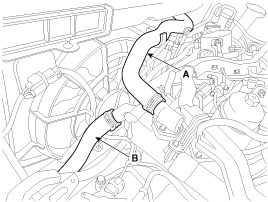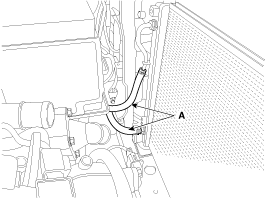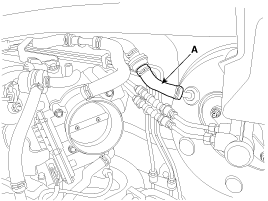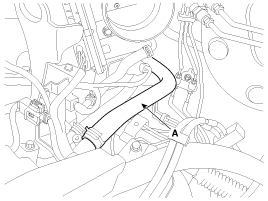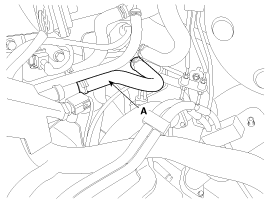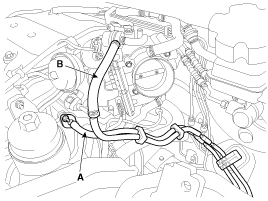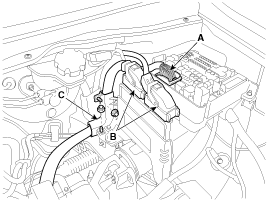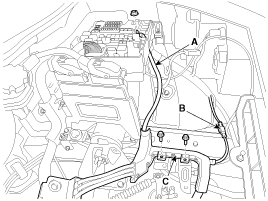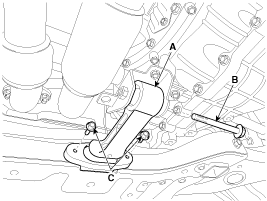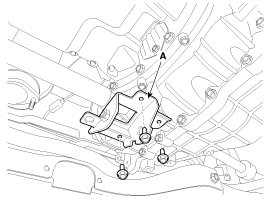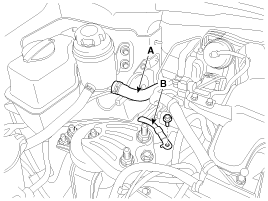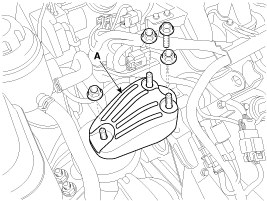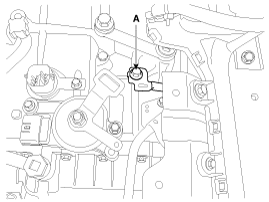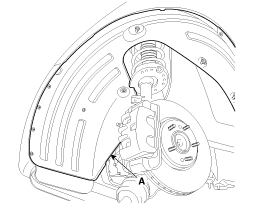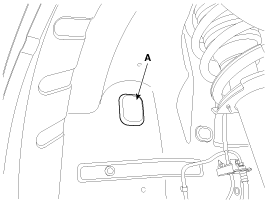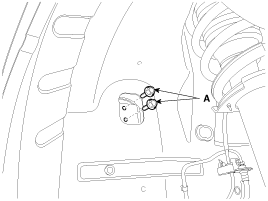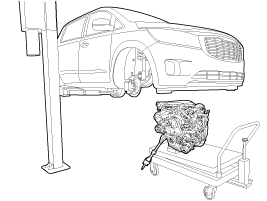 Kia Sedona: Engine And Transaxle Assembly Repair procedures
Kia Sedona: Engine And Transaxle Assembly Repair procedures
Third generation YP (2014-2025) / Kia Sedona YP Service Manual / Engine Mechanical System / Engine And Transaxle Assembly / Engine And Transaxle Assembly Repair procedures
| Removal |
|
Mark all wiring and hoses to avoid misconnection. |
| 1. |
Remove the engine cover.
(Refer to Engine And Transaxle Assembly - "Engine Cover") |
| 2. |
Remove the air duct.
(Refer to Intake And Exhaust System - "Air Cleaner") |
| 3. |
Remove the battery and battery tray.
(Refer to Engine Electrical System - "Battery") |
| 4. |
Remove the air cleaner assembly.
(Refer to Intake And Exhaust System - "Air Cleaner") |
| 5. |
Remove the engine room under cover and engine room side cover.
(Refer to Engine And Transaxle Assembly - "Engine Room Under Cover") |
| 6. |
Drain the engine coolant.
(Refer to Cooling System - "Coolant") |
| 7. |
Disconnect the radiator upper hose (A) and lower hose (B).
|
| 8. |
Disconnect the wire harness connectors and control cables from the transaxle.
(Refer to Automatic Transaxle System - "Automatic transaxle") |
| 9. |
Disconnect the ATF cooler hoses (A).
|
| 10. |
Disconnect the brake booster vacuum hose (A).
|
| 11. |
Disconnect the heater outlet hose (A).
|
| 12. |
Disconnect the heater inlet hose (A).
|
| 13. |
Disconnect the fuel hose (A) and the purge control solenoid valve (PCSV) hose (B).
|
| 14. |
Recover the refrigerant and then remove the high pressure pipe and low pressure pipe.
(Refer to Heating, Ventilation Air conditioning - "Compressor") |
| 15. |
Disconnect the wiring connector and harness from the engine room.
|
| 16. |
Disconnect the battery "+" cable (A). |
| 17. |
Disconnect the front connector (B). |
| 18. |
Remove the battery wiring protector (C).
|
| 19. |
Remove the front muffler.
(Refer to Intake And Exhaust System - "Muffler") |
| 20. |
Remove the roll rod bracket (A).
|
| 21. |
Remove the roll rod mounting support bracket (A).
|
| 22. |
Remove the sub frame.
(Refer to Suspension system - "Sub frame") |
| 23. |
Support the engine and transaxle assembly with a lift table.
|
| 24. |
Disconnect the hydraulic power steering suction hose (A) and engine earth cable (B).
|
| 25. |
Remove the engine mounting support bracket (A).
|
| 26. |
Disconnect the transaxle ground line (A).
|
| 27. |
Remove the LH front wheel guard (A).
|
| 28. |
Remove the service cover (A).
|
| 29. |
Remove the transaxle support bracket mounting bolt (A).
|
| 30. |
Remove the engine and transaxle assembly by lifting vehicle.
|
|
| Installation |
Install in the reverse order of removal.
Perform the following :
| • |
Adjust the shift cable. |
| • |
Adjust the throttle cable. |
| • |
Refill engine with engine oil. |
| • |
Refill the transaxle with fluid. |
| • |
Refill power steering fluid. |
| • |
Refill the radiator and the reservoir tank with engine coolant. |
| • |
Place the heater control knob on "HOT" position. |
| • |
Clean battery posts and cable terminals and assemble. |
| • |
Inspect for fuel leakage. |
| – |
After assembling the fuel line, turn on the ignition switch
(without operating the starter) so that the fuel pump runs for
approximately two seconds and fuel line pressurizes. |
| – |
Repeat this operation two or three times, and then check for fuel leakage at any point on the fuel lines. |
| • |
Bleed air from the cooling system. |
| – |
Start engine and let it run until it warms up.(Until the radiator fan operates 3 to 4 times.) |
| – |
Turn off the engine and let it cool down. Check the level in
the radiator, and add coolant if needed. This will allow trapped air to
be released from the cooling system. |
| – |
Put radiator cap on tightly, then run the engine again and check for leaks. |
 Engine Mounting Repair procedures
Engine Mounting Repair procedures
Removal and Installation
Engine Mounting Bracket
1.
Disconnect the battery negative terminal.
2.
Install the jack to the edge of the lower oil pan (A) to support the engine.
&n ...
Other Information:
Front seat adjustment - power
The front seat can be adjusted by using the control switches located on the outside
of the seat cushion. Before driving, adjust the seat to the proper position so you
can easily control the steeri ...
Components and Components Location
Components
...
Categories
- Home
- First Generation
- Second Generation
- Third generation
- Kia Sedona YP 2014-2025 Owners Manual
- Kia Sedona YP 2014-2025 Service Manual
Copyright © www.kisedona.com 2016-2025



